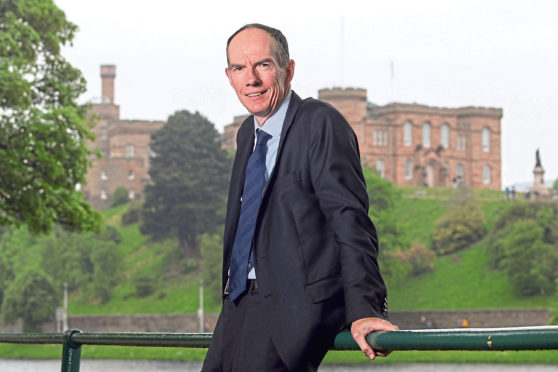Continuing caution among businesses over starting to invest again amid the Brexit process could see inflation pressures build, one of the most senior figures in the Bank of England told The Press and Journal yesterday.
Deputy governor Sir David Ramsden, a member of the Bank’s monetary policy committee (MPC), which sets the UK’s official interest rate, was speaking in Inverness at the end of a two-day visit to the area.
He expanded on comments he had made on the committee’s latest forecast in a policy speech in the Highland capital the day before.
He said: “That forecast is conditional on the assumption there will be a smooth transition to an average of Brexit outcomes and against that backdrop we expect business investment will start to pick up.
“And so, given where the labour market is, given that real incomes are beginning to see some pick-up, growth might be weak in the middle of this year and then start to pick up. I was trying to make the point that I can see that businesses might be more cautious to start investing again at the kind of pace that we are forecasting, because we see investment picking up to 5% or so next year. It’s currently falling on a year earlier.
“Demand might be a bit slow to pick up but at the same time I’m also not sure that productivity growth, which determines how quickly the economy can grow without inflation rising, is going to pick up quite as quickly as we are forecasting. So, actually, I am not so optimistic on the demand side. Equally though, on the supply side, I think it may take longer for growth to pick up.
“In terms of where that leaves me on the policy outlook, I am comfortable with the MPC’s current guidance. If things do progress along that track I have described – demand and supply growth both rising but maybe not as strongly as in the central forecast – then I do think inflation pressures will build and that will then require some increases in bank rate, but those will be limited and gradual.
“The tone I was striking was consistent with the rest of the committee on the outlook for inflation and, therefore, policy.”
